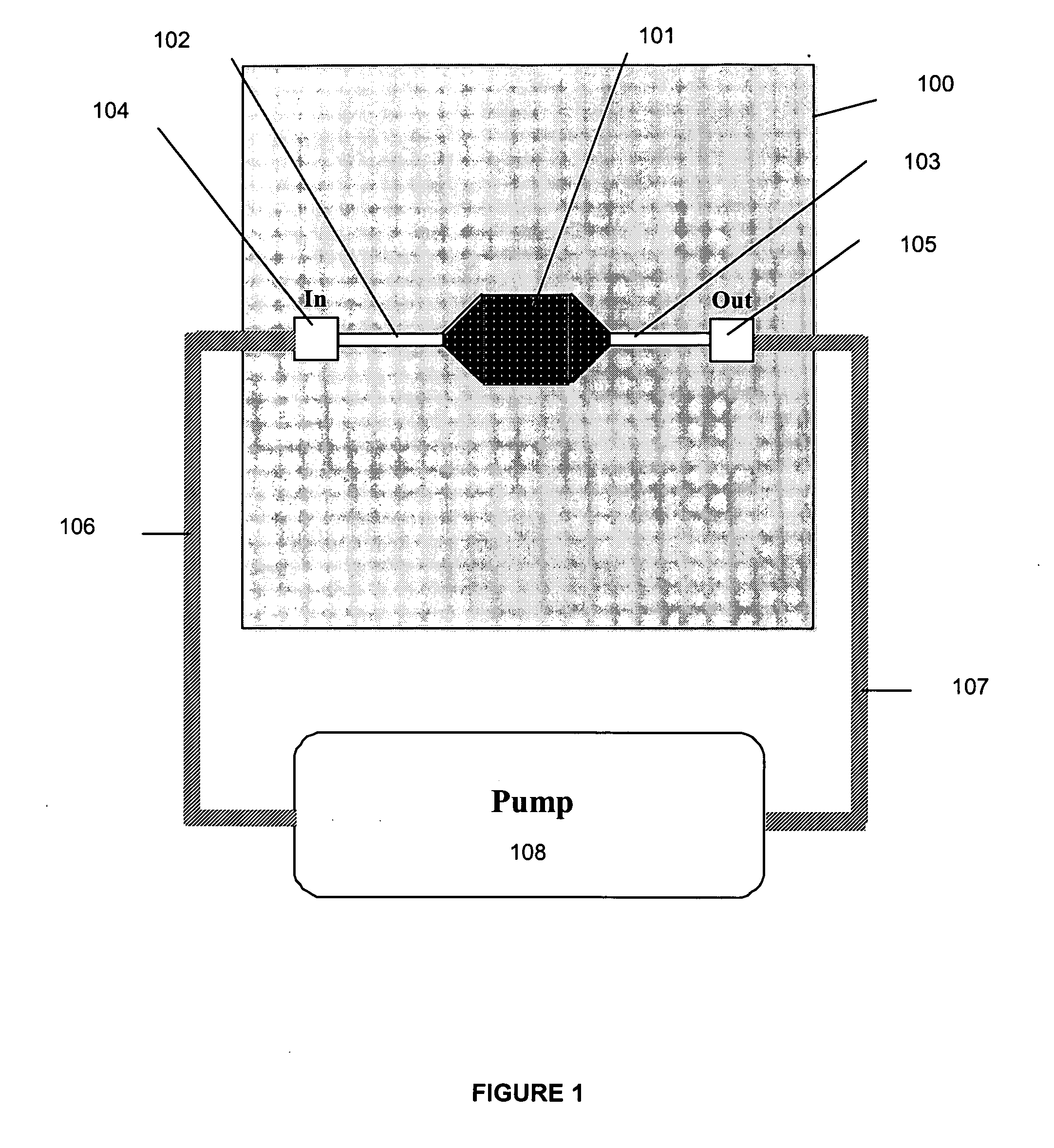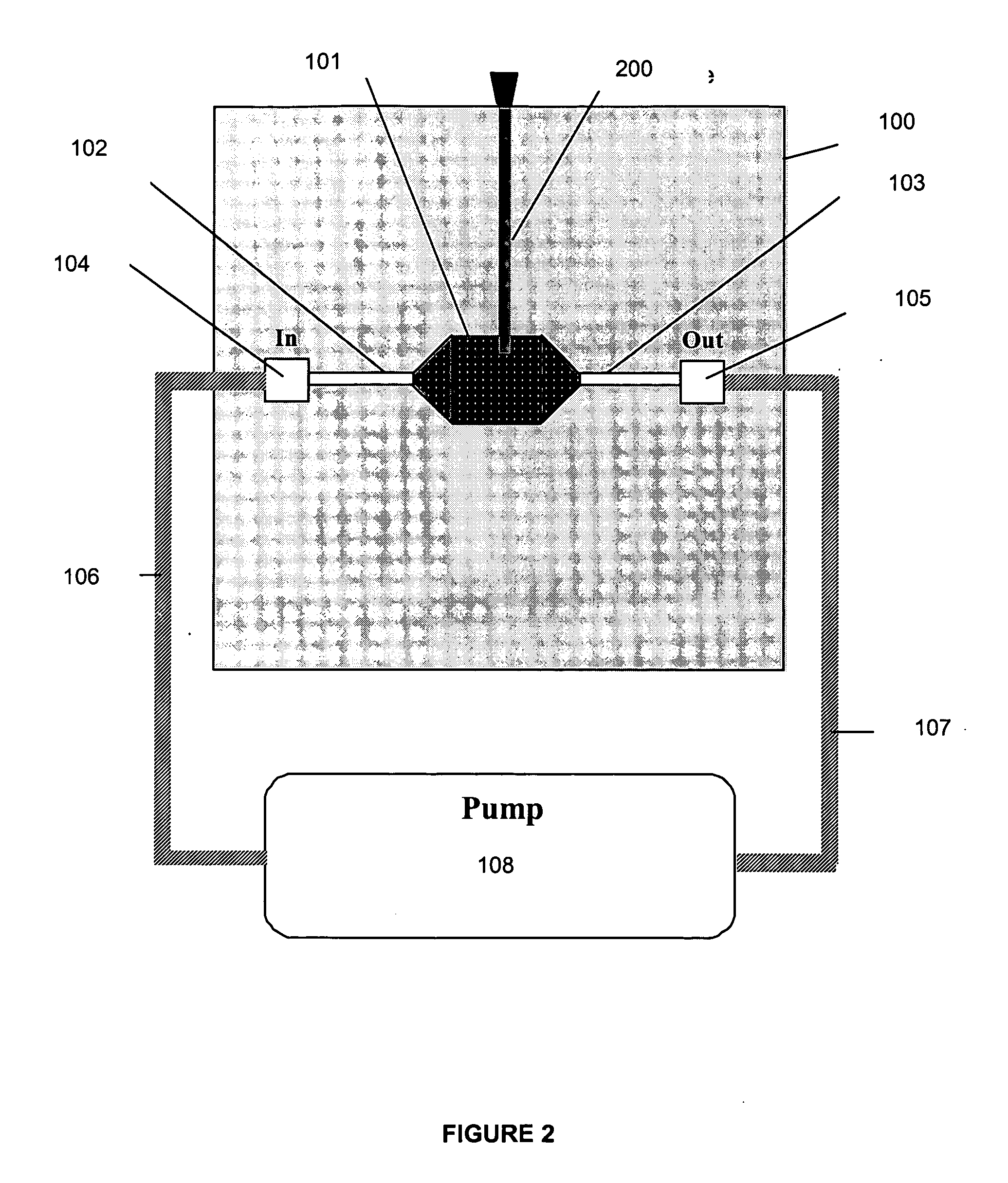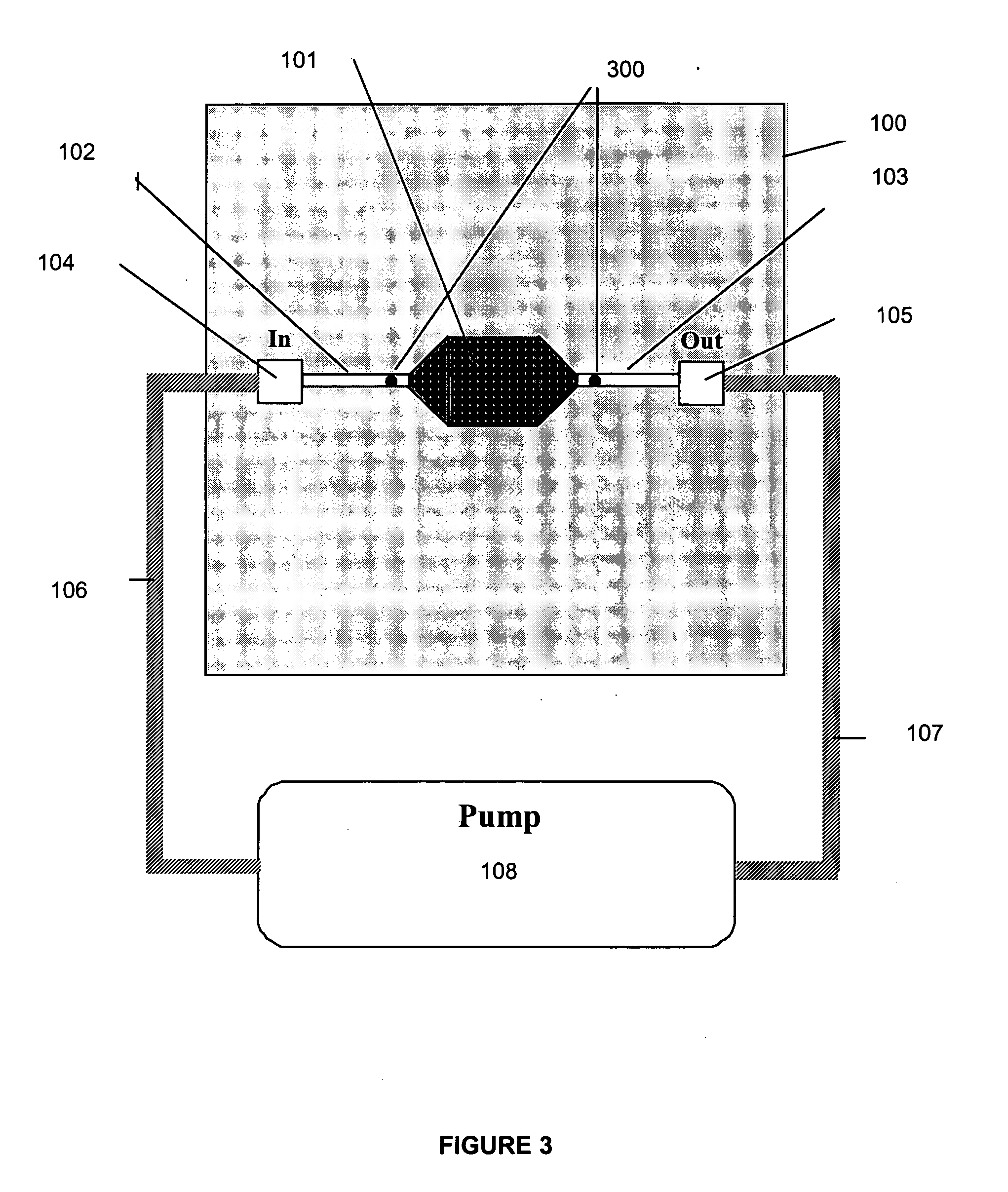Circulating flow device for assays of cell cultures, cellular components and cell products
a technology of cell culture and circulating flow, which is applied in the field of in vitro culturing systems, can solve the problems of still substantial limitations, undesirable consequences, and metabolites that can be more toxic than the parent compound
- Summary
- Abstract
- Description
- Claims
- Application Information
AI Technical Summary
Benefits of technology
Problems solved by technology
Method used
Image
Examples
Embodiment Construction
[0062] In one embodiment of the present invention, the in vitro culture device provides a means whereby cells, subcellular material, subcellular components, or cell products are maintained in vitro in an environment physiologically representative of certain in vivo conditions, thereby improving the accuracy with which toxicity and metabolic assays performed on the device are able to predict physiological outcomes obtained in vivo. In one embodiment, a pharmacokinetic culture device is seeded with the appropriate cells, thereby creating a culture system which can then be used for compound toxicity assays, metabolism studies, absorption studies, bioavailability studies, models for development of cells of interest, models of infection kinetics, immunology studies, and the like. An input variable, which may be, for example, a compound, sample, genetic sequence, pathogen, cell, (such as a progenitor cell) is added to an established culture system. Various cellular outputs may be assessed...
PUM
 Login to View More
Login to View More Abstract
Description
Claims
Application Information
 Login to View More
Login to View More - R&D
- Intellectual Property
- Life Sciences
- Materials
- Tech Scout
- Unparalleled Data Quality
- Higher Quality Content
- 60% Fewer Hallucinations
Browse by: Latest US Patents, China's latest patents, Technical Efficacy Thesaurus, Application Domain, Technology Topic, Popular Technical Reports.
© 2025 PatSnap. All rights reserved.Legal|Privacy policy|Modern Slavery Act Transparency Statement|Sitemap|About US| Contact US: help@patsnap.com



